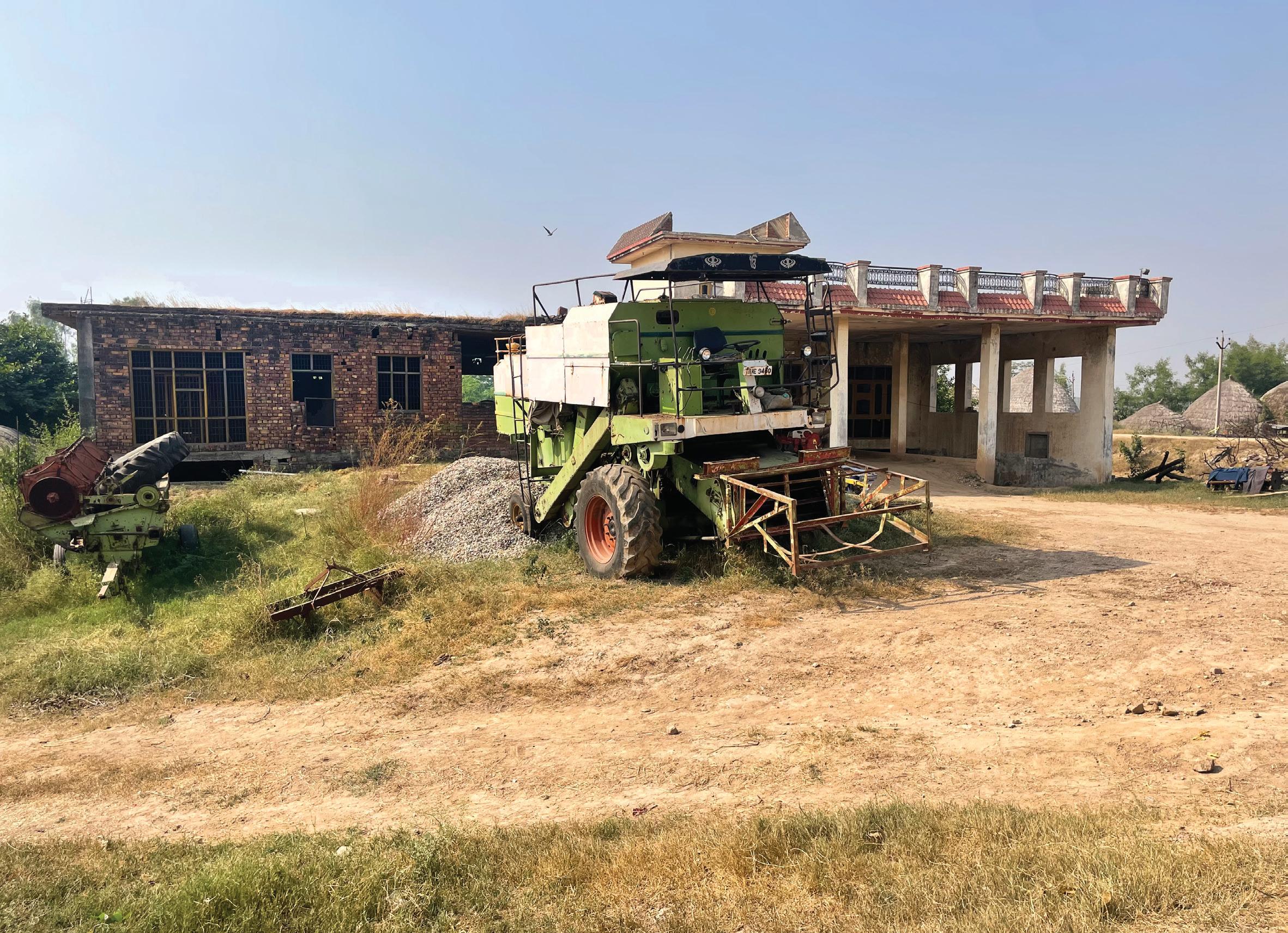Versuchen GOLD - Frei
Commons in crisis
Down To Earth
|January 16, 2025
A landmark 2011 Supreme Court ruling to protect shared resources deepens struggles for India's marginalised communities

IN ROHAR Jagir village, nestled in Punjab's Patiala district, little has changed in the 14 years since a landmark legal battle over shared community resources drew national attention. Despite a 2011 Supreme Court verdict, hailed as a watershed moment for governance of commons—shared natural resources such as water, forests and pastures—in India, the 7.2-hectare (ha) pond at the centre of the dispute remains encroached upon. The ruling, intended to safeguard commons, appears to have changed little for the people it was meant to protect—or for those it sought to penalise.
The 80 households that encroached upon the pond remain locked in limbo. Unable to occupy the houses they had built, the residents cling to the hope that one day they might gain legal access. While wealthier families have moved on, building new houses elsewhere, poorer families have neither been able to claim the dwellings they had built nor are benefitting from a restored pond.
The conflict began in 2003, when village resident Jagpal Singh attempted to build a house on the pond, officially designated as gair mumkin (uncultivable) land. His actions alarmed fellow resident Dev Singh and members of the gram panchayat, who opposed the encroachment. The parties first approached the district collector, then the joint development commissioner and later the Punjab and Haryana High Court, before landing in the Supreme Court (see ‘Protracted struggle’). In 2011, the apex court ordered the eviction of occupants from commons across India and mandated state governments to implement schemes for restoring these lands. The verdict allowed for regularisation only in “exceptional cases”, such as where leases were granted under government notifications to landless labourers or socially deprived members of Scheduled Castes (SCs) and Scheduled Tribes (STs), or where public utilities such as schools already existed on the land.
Diese Geschichte stammt aus der January 16, 2025-Ausgabe von Down To Earth.
Abonnieren Sie Magzter GOLD, um auf Tausende kuratierter Premium-Geschichten und über 9.000 Zeitschriften und Zeitungen zuzugreifen.
Sie sind bereits Abonnent? Anmelden
WEITERE GESCHICHTEN VON Down To Earth

Down To Earth
COP OF TALK
The UN's 30th climate summit, COP30 in Belém, was billed as the COP of truth and implementation.It was an opportunity for the world to move beyond diagnosis to delivery. Instead it revealed a system struggling to prove its relevance.
14 mins
December 01, 2025
Down To Earth
1,500 days, and an alarm for new climate
SEASONS ARE the compass that guide humans to survive and thrive as a society. What happens if seasons lose their distinct character and predictable rhythm? This is no longer a theoretical question. The Earth is entering a new climate regime, its atmosphere now saturated with greenhouse gases at levels without precedent in human history. And the earliest sign of this shift is the near-dissolution of familiar seasons; all merging and dissipating like the pupa inside the chrysalis, but, not to give birth to that mesmerising butterfly. This metamorphosis is manifest in the blizzard of weather events, extreme in severity and unseasonal by nature and geography.
2 mins
December 01, 2025

Down To Earth
Rights in transit
A recent dispute over transport and trade of kendu leaves in Odisha highlights differing interpretations of forest rights laws in the state
6 mins
December 01, 2025
Down To Earth
Roots of peace
Kerala's forest department plants fruit and fodder trees to ease human-wildlife tensions
2 mins
December 01, 2025

Down To Earth
Flattened frontiers
Efforts to reclaim degraded land from Chambal ravines expose both people and biodiversity to ecological risks from erosion and flooding
5 mins
December 01, 2025

Down To Earth
INDIA'S DRY RUN
India is poised to be a global hub of data centres—back-end facilities that house servers and hardware needed to run online activities.
21 mins
December 01, 2025

Down To Earth
Bangla generic drugs to the rescue
A buyer's club for generic cystic fibrosis drugs sourced from Bangladesh highlights the country's laudable pharma development
4 mins
December 01, 2025

Down To Earth
Direct approach
A new direct cash transfer scheme as well as decades of women-centric programmes yield an electoral windfall for the ruling alliance in Bihar
5 mins
December 01, 2025

Down To Earth
HIDDEN RESOURCE
Punjab's 1.4 million abandoned borewells offer a chance to mitigate flood damage and replenish depleting groundwater
4 mins
December 01, 2025
Down To Earth
Corporate bias
INDIA'S DRAFT Seeds Bill, 2025, introduced by the Centre in mid-November, proposes a few key changes.
1 min
December 01, 2025
Listen
Translate
Change font size
